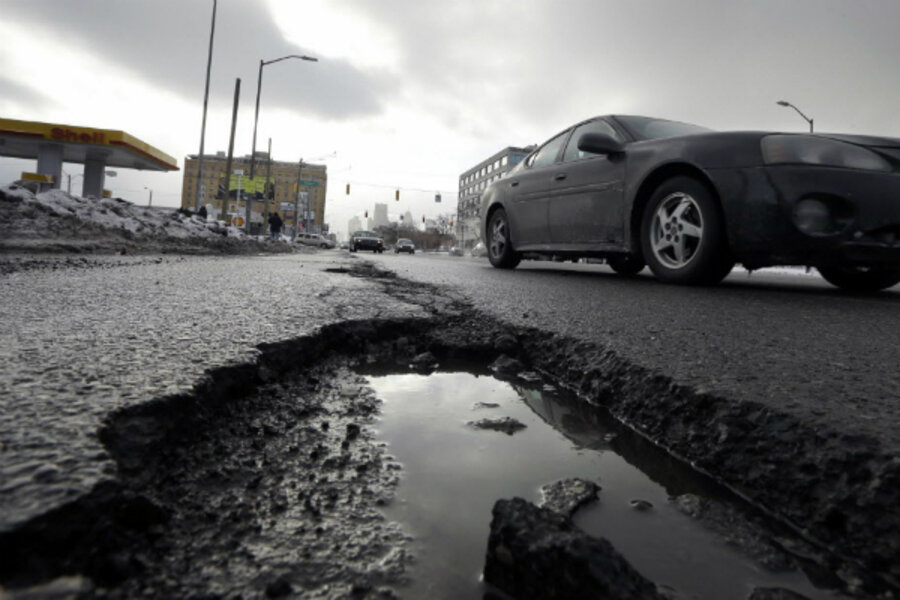Here's what the 'do-nothing' Congress actually did do – and why
Loading...
| Washington
Members of Congress begin their August recess this week branded. They are the "do-nothing" Congress, a body of lawmakers who can’t solve the child-migrant crisis at the border, let alone larger problems of immigration.
But that doesn’t mean complete gridlock.
A few things have been accomplished since January, even though this Congress is the least productive in two decades, according to an analysis by Drew DeSilver at the Pew Research Center. In this highly polarized atmosphere, those few things are worth noting, and asking: Why did they get past the partisan gatekeepers in both houses, and what does this portend for when members return from their summer break on Sept. 8?
Jason Grumet, founder and president of the Bipartisan Policy Center, a Washington think tank, divides the year’s sparse successes into three baskets: urgent crises, regional issues that needed attention, and a “spunky” bipartisan job-training bill that managed to scramble over the wall without a crisis or big lobby to push it over the top.
Here’s what Congress did this year:
Crisis creations: The year started off with a bipartisan spending bill in January and a last-minute agreement to raise the debt ceiling in February. Last week, lawmakers agreed on a fix to the scandal of long waits and manipulated records at the Department of Veterans Affairs. They found emergency money for Israel’s anti-rocket protective shield, Iron Dome. And they passed a funding “patch” for highway repairs just as the federal dollars to pay for this summer’s repairs were about to run dry.
Regional reasons: Other bills were passed with the support of members from both parties, including the long-awaited farm bill, legislation to work on various water projects around the country, and federal help for home flood insurance and home heating costs.
The little train that could: The Workforce Innovation and Opportunity Act consolidates federal aid to state and local job-training and employment efforts and updates that assistance. Both parties had been working on this bill for a long time, prompted by chaos and inefficiency in job-training programs.
Also in a class by itself: Senate Democrats worked through a long backlog of judicial appointments, but only because they changed the rules last year so Republicans could no longer block them.
OK, that’s a nice little list, but there are other crises that have not been addressed, such as the one at the border. Other regional issues, such as raging wildfires in the West, also couldn’t make it through this Congress. And other bills that have traditional bipartisan backing, such as a measure to reform home mortgage giants Fannie Mae and Freddie Mac, are going nowhere.
So what has caused this year’s crop, as scant as it is, to yield fruit while other stalks whither?
One explanation is that every crisis has its own set of circumstances – and own political risk. Vacationing motorists will hit the roof over unfilled potholes, and jobless numbers will grow if funding isn’t available for repairs (note, though, that lawmakers couldn’t agree on any long-term fix to transportation funding; this solution runs only through next May).
The border crisis, on the other hand, is attached to a highly divisive bigger issue, immigration reform. That issue is not pressing for this midterm election cycle – when Hispanic voters are unlikely to play a decisive role. Indeed, most Republicans don’t have many Hispanics in their districts.
And that hints at an overall explanation. What passes both chambers are issues that are driven by Republicans, says Norman Ornstein, a longtime political observer with the American Enterprise Institute in Washington. With Republicans controlling the House, and able to use filibusters to block legislation in the Democrat-controlled Senate, they are the drivers.
“First, they want to do as little as possible that gives Barack Obama opportunities for signing ceremonies,” Mr. Ornstein says. Second, “they want to do as little as possible to divide their base.” And third, he adds, they still want to get some things done so they don’t appear to be a do-nothing Congress.
Take the veterans bill. When Mr. Obama signed it, it also served as a reminder that something had gone wrong on his watch. That's a signing that serves a political purpose. Veterans also don’t divide the GOP base (or the Democratic one). In the end, the bill was a safe opportunity for the GOP to show that it had done something about a national problem.
When Congress comes back in September, it will have a little over two weeks to finish its work before it breaks again for campaigning. Ornstein is not optimistic that much more will be accomplished during that time.
But next year may be slightly more promising. “We can all breathe a short sigh of relief that 2015 is not an election year," says Mr. Grumet of the Bipartisan Policy Center. Usually, he adds, “the first six months of nonelection years are historically productive times for Congress.”
Given the low bar that this Congress has set for productivity, lawmakers won't have far to step up to show improvement.








